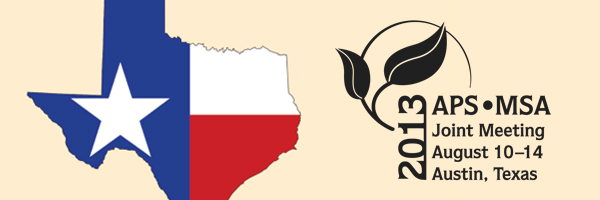APS Homepage
Back

Poster Session: Mycology
© 2013 by The American
Phytopathological Society. All rights reserved.
93-P
Exploring the basidiomycetous endophytic community of natural and planted rubber tree populations (Hevea brasiliensis).
R. MARTIN (1), R. Gazis (1), P. Chaverri (2), D. S. Hibbett (1), A. Justo (1)
(1) Clark University, Worcester, MA, U.S.A.; (2) University of Maryland, College Park, MD, U.S.A.
Recent research has examined the endophyte community of the economically important rubber tree, Hevea brasiliensis, but the focus has been on Ascomycetes. The purpose of this study was to characterize Basidiomycete endophytes from leaves and sapwood of H. brasiliensis using molecular and morphological methods. Sequence data were obtained from 295 isolates collected from 190 rubber trees representing populations distributed in wild habitats (Peru and Brazil) and plantations (Peru, Mexico, and Cameroon). Community diversity and composition were compared between wild and plantation ecosystems and between leaves and sapwood tissue types. Isolate identification was conducted through phylogenetic placement using three loci: ITS, LSU, and RPB1. Phylogenies were constructed under maximum likelihood and Bayesian inference, with the inclusion of curated sequence data obtained from previously published studies. Ancestral state reconstruction was conducted under parsimony and maximum likelihood models to infer the most plausible ecological role of the most recent common ancestor containing the endophytic strains in this study. The transition between saprobic, endophytic, and parasitic habits was investigated. Results from this study suggest that even though the endophytic community of cultivable endophytes is dominated by ascomycetous strains, basidiomycetes also represent an important part of the endophytic community of rubber trees, and potentially of other tropical plants.